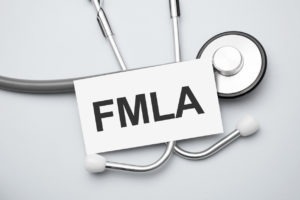The arrival of monkeypox on the heels of COVID-19 is an unfortunate reality. It’s a stark reminder that illnesses come and go, making their way into the workplace. When they do, there are federal, state and local laws that must be followed—rules that are ever changing. Remember when COVID-19 vaccinations were a condition of employment in some workplaces?
Most of us want the same things from our workplace. Safety, fairness, and a means to be a productive member of the team. In some cases, that requires that we take – and grant– leaves of absence when health is the issue.
Two federal laws govern communicable diseases in the workplace, and time off—the ADA and the FMLA. We break them down for you below.
While every situation is unique, several guidelines apply: Employees need to be truthful and reasonable when requesting time off and/or accommodations. Employers must handle leave requests free from discrimination and retaliation. They also need to keep employee medical information private and in a separate file.
And here’s something everyone should know: Accommodations must be made according to the governing law and without undue hardship to the business.
The ADA and workplace illness
The Americans with Disabilities Act (ADA), a federal civil rights law, protects people from disability discrimination. Here are some key facts regarding the ADA:
- It applies to businesses with 15 or more employees.
- Medical conditions under the ADA are wide ranging and may include long-COVID, and potentially Monkeypox.
If you have individuals experiencing an ADA-covered medical condition, work with them to find a way to support them in accomplishing their job duties. For instance, if an employee tires easily, you could allow rest breaks. Other accommodations could include modified scheduling, role reassignment or restructuring.

Training managers to recognize a need for leave, a need for an accommodation, and to be careful to avoid unequal treatment or discrimination against workers, is essential. Did you know that requests for accommodations don’t have to be submitted in writing, they can be verbal. They also don’t need to include the phrase “reasonable accommodation.” As such, managers should be trained to recognize when an employee may be making such a request and should initiate a dialogue to begin the process.
Know the FMLA leave rules
The Family and Medical Leave Act (FMLA) allows employees to take unpaid, job-protected leave for certain medical reasons. Here are some key facts from the U.S. Department of Labor:
- It applies to businesses with 50 or more employees.
- Eligible employees must have worked for the employer for at least 12 months.
- The employee must work at a location with 50 or more employees within 75 miles.
- Employees may take up to 12 workweeks of leave in a 12-month period.
What are the medical reasons for taking leave? (1) The employee has a health condition so serious that they cannot perform the essential functions of their job OR (2) They need to care for a spouse, child or parent who has a serious health condition.

Here are some key points for employees applying for a leave.
- Request it 30 days in advance if possible.
- If the absence is unforeseeable, provide notice as soon as possible.
- On your first request, you do not have to assert FMLA rights or even mention FMLA.
- If you request additional leave, you must reference the qualifying reason or the need for FMLA leave.
For employers, remember that you must:
- Post a notice explaining FMLA rights and responsibilities.
- Include FMLA information in employee handbooks.
- Answer employee FMLA requests with information about their eligibility, rights and responsibilities.
- Restore the employee’s original job, or an equivalent, when they return from leave.
Workplace leaves of absence because of illness need to be handled carefully to ensure fairness to all employees and to remain compliant with the law. NEMR Total HR is here to advise businesses on the complexities. Email us or chat with us here.


